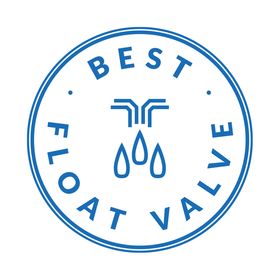Best Float Valve Installation Tips

Everyone sets up their watering systems differently! We applaud that and really enjoy seeing the creativity that our customers use.
Please feel free to share them with us via Facebook or send an email to shannon@bestfloatvalve.com to show us your set up. We would love to feature you in our newsletter and/or on our Facebook page!
No matter what your tank, water source, herd size, or climate look like, Best Float Valve can help you work in any type of system!Today, we are looking at concrete or tire tanks plumbed from the bottom of the tank. Check out our fiberglass, poly, steel, concrete, or tire tank suggestions for more info.


 =
=
Not everyone puts a concrete pad underneath the tank, as you can see in the pictures, but in some places, NRCS requires it.
- We never recommend hooking the valves to PEX or PVC pipes because of the torque the lever can apply to the pipe. They are also more easily broken by livestock. Instead, transition from PEX or PVC under the concrete/fiberglass to a stainless steel or brass pipe nipple that extends into the tank to the float valve. Do not use galvanized pipe nipples because they can corrode rather quickly due to chemical reactions with the concrete.
- We recommend that the pipe nipple extend approximately 3" from the top of the concrete/fiberglass for valves with a straight arm, and approximately 5" for valves with a bent arm (like the tank in the first picture).
- If your pipe comes up higher (less than 6" from the top of the water), any of our float valve kits can come with a bent arm. This will allow the valve to be as low as possible in the water and still permit the valve to open fully.
- The standard level for an overflow pipe is 1-2" from the top of the tank, or full if the wind won't bother it.
- A drain pipe is not absolutely necessary, but if it is convenient, go ahead and put one on in. It will be easier to clean the tank and you won't have to siphon or pump it out.
- The float should be set to be 2/3 underwater in high pressure.
Options:
- We have barrel floats and pan floats. The floats in the concrete tanks shown here are our pan floats.
- If you are looking for continuous flow, you can install Best Float valves with a bleeder valve, like the second picture. This one is pictured with our extension kit, which can keep more of the tank open longer.
- If you need ice prevention, the Micro Sweeper can attach to any of our ported valves. Customers rave about them!
- If you aren't sure if you want ice prevention but you might, order it ported and plugged to have the option later.
- If you want to plumb your tire tank from the side or top, we have tire tank mount kits available.
- If you have a steel, fiberglass, poly, or concrete tank, we have side mount kits that are fantastic and come in multiple sizes and riser kits to mount from the bottom!
If you have questions about how our Best Float Valve could work in your system, please let us know! We would be thrilled to help you! We would love the chance to show you why our livestock tank float valves could be the answer you have been searching for!
If you are looking for stock tanks of most any kind, we have dealers all over the country!
Please follow us on Facebook for information about promotions, new products, and local dealers and help us get the word out about our store and products!






